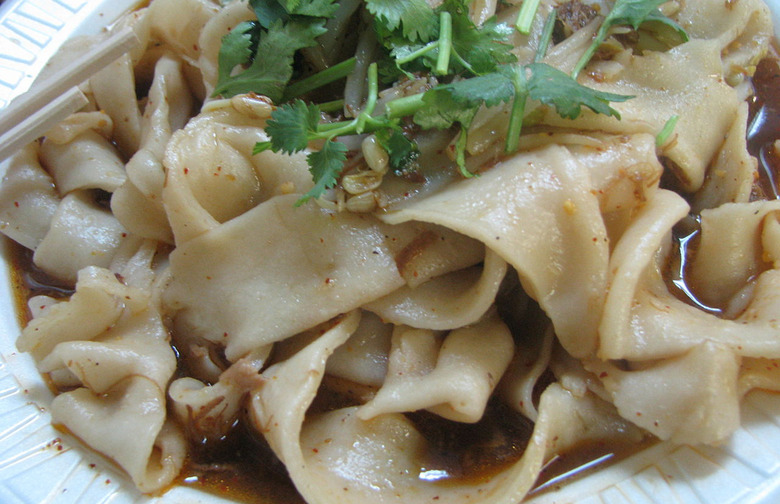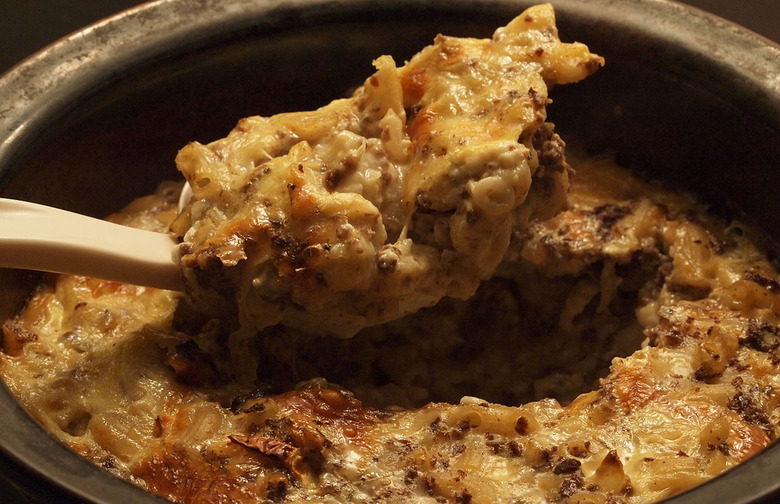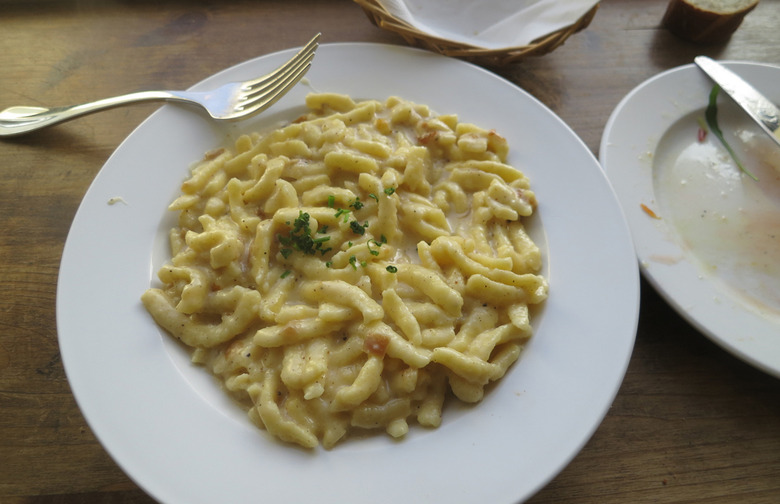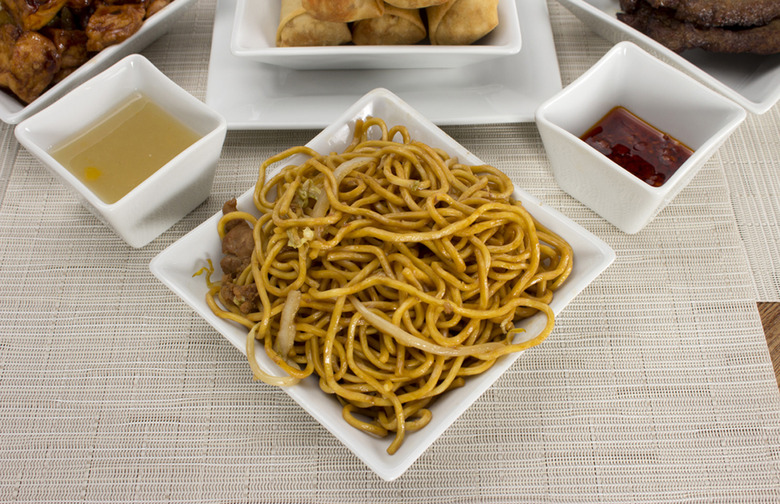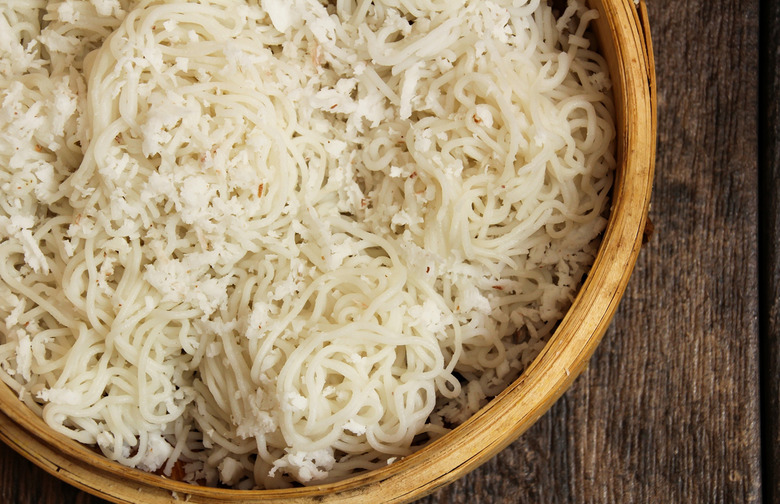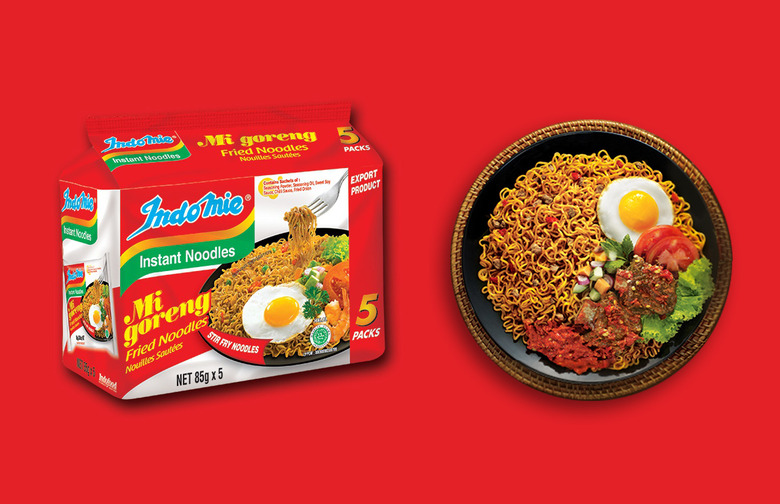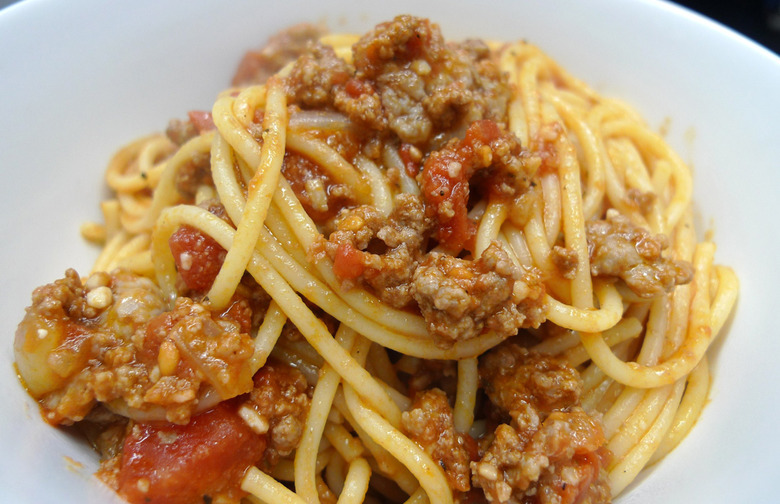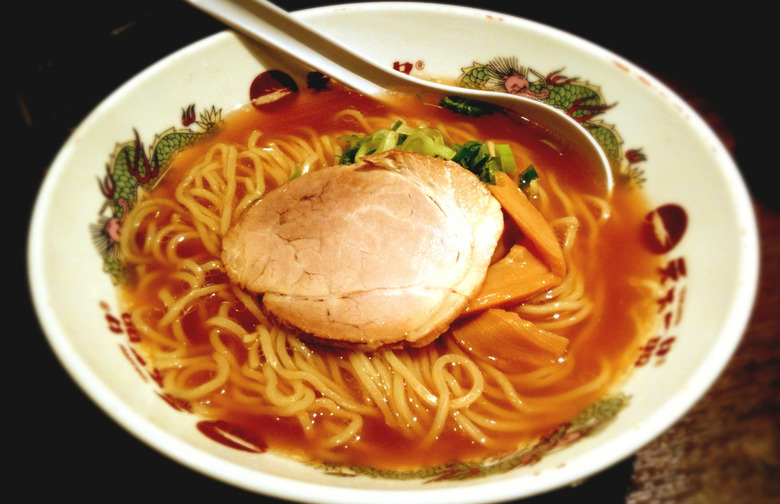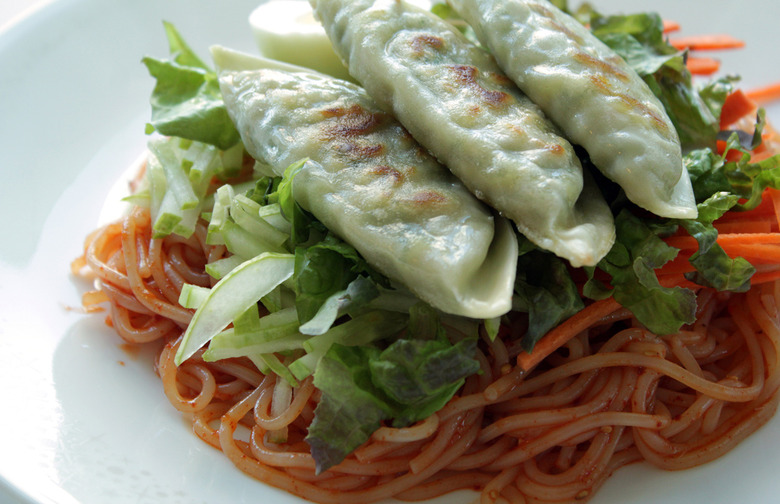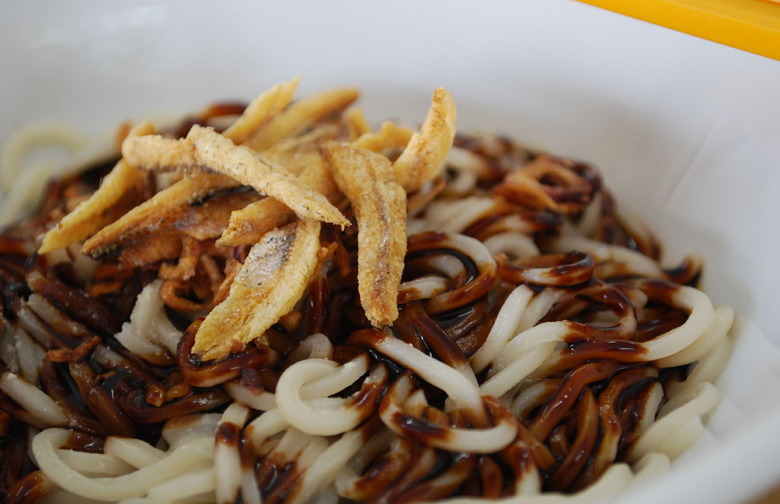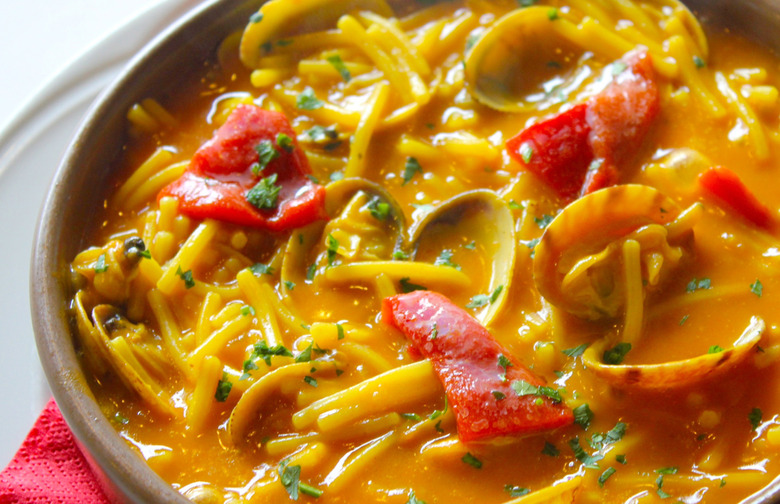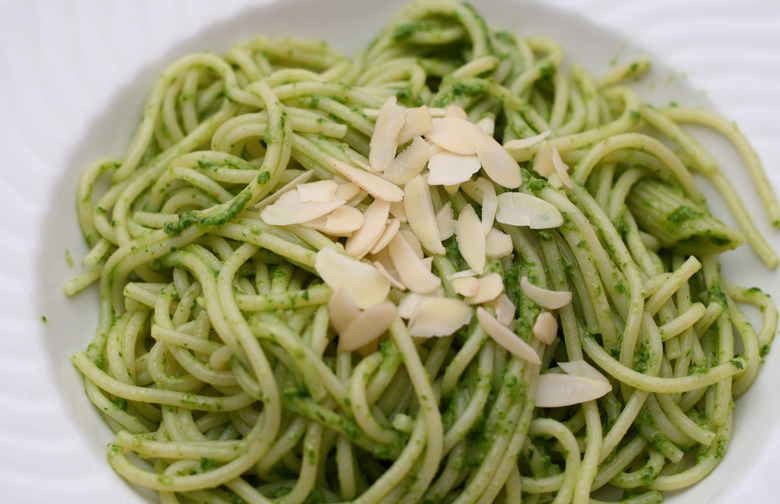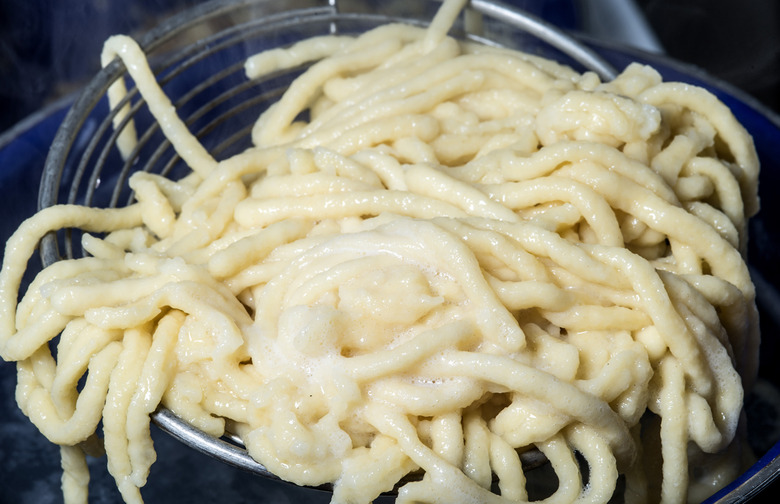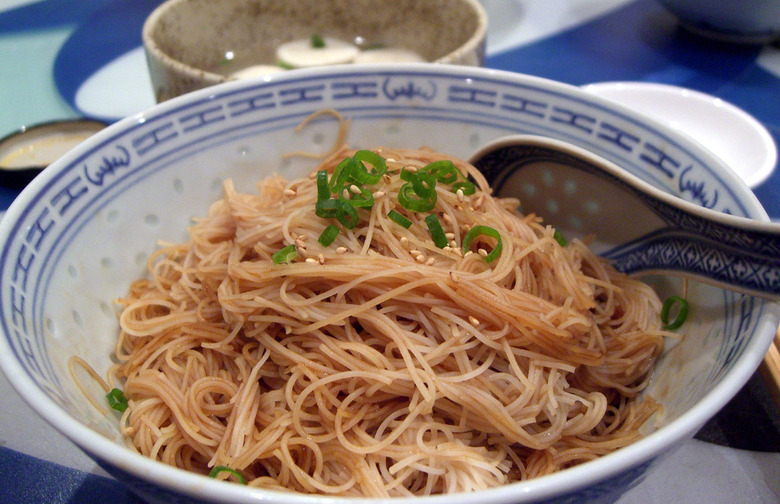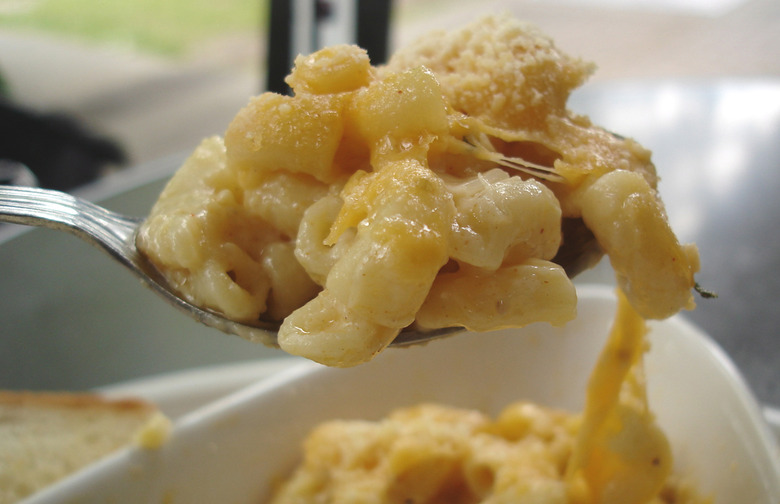How These 15 Countries Use Their Noodles
Who doesn't love a big bowl of noodles? There's something about that chewy and versatile food that makes it a staple the world over. Seemingly every country noodles have come into contact with have made them their own. Here's how 15 countries use their noodles in their cooking.
China
China has more indigenous noodles than any country on Earth. The most common noodles in China are lamian, which are hand-pulled ("biangbiang" noodles, found at restaurants like Xi'An Famous Foods, are also hand-pulled); lo mein (egg noodles, usually stir-fried), chow fun (wide, flat rice noodles), jau mein (thin noodles made with lye water for a chewier texture, common in Cantonese cuisine); and fan pei (wide noodles made from mung bean starch).
Finland
Macaroni casseroles are very common in northern European home cooking. In Finland, this dish is called makaronilaatikko, and is a very popular traditional home-cooked dish. It's typically made by combining macaroni with cheese sauce, ground beef, and onions in a casserole and baking it. It's usually served with ketchup.
Germany
Spätzle are soft egg noodles found in Germany, made with a dough comprised of eggs, flour, and salt. There are a few ways to prepare spätzle: The dough can be scraped in long, thin strips off a cutting board and into boiling water; it can be extruded through a device similar to a potato ricer; or it can be run through a coarse grater into the water. Once it's boiled, it's usually then quickly sautéed with butter and herbs, and served alongside traditional meat-heavy German dishes like sauerbraten and rouladen. It can also be mixed with cheese sauce, to make a macaroni and cheese-like dish. A similar noodle, halušky, is popular in Central and Eastern European countries.
Hong Kong
In Cantonese cuisine (which encompasses Hong Kong) One of the most popular noodles is yi mein, a flat egg noodle made with wheat flour and carbonated water before being dried. They're popular in soups and stir-frys, and are chewy and elastic. Instant noodles, called Doll Noodles in Hong Kong, are also extremely popular there.
India
In India's Tamil Nadu state as well as the island of Sri Lanka, a thin extruded noodle called idiyappam is very popular. It's usually made with rice flour, salt, and water, and is usually served alongside curry. A noodle called sevai is also popular in the states of Tamil Nadu and Karnataka; it's made by making rice dumplings and running them through a fine press.
Indonesia
In Indonesia, bakmi is a popular wheat-based noodle that's usually topped with meat. Indomie, a brand of instant noodle, is also extremely popular; it's also become a household name in Nigeria.
Italy
Noodles in Italy are a way of life. Pasta there comes in countless varieties, far too many to name here, but you know the common ones: spaghetti, ravioli, ziti, penne, fusilli, tagliatelle. Pasta in Italy is divided into two camps: dried pasta, which is usually just durum wheat (semolina) flour and water; and fresh pasta, which also includes eggs. These are then served in three styles: in sauce, in soup, or al forno, incorporated into a baked dish.
Japan
Noodles are also a way of life in Japan, where they're most commonly eaten in the form of ramen. Ramen noodles are made with wheat flour, salt, water, and an alkaline solution called kansui that lends them that chewy, springy texture. Other popular noodles in Japan include udon (thick wheat noodles generally served in a simple broth), soba (thin buckwheat noodles served chilled with dipping sauce or in hot broth), and shirataki (thin, gelatinous, and translucent noodles made with konjac yam). And, of course, instant noodles are also extremely popular.
Korea
In Korea, popular noodles include cheonsachae (jelly-like noodles made from a kombu-steaming byproduct), acorn noodles (made from acorn flour mixed with buckwheat or wheat flour and usually served in soup), and jjolmyeon (very chewy wheat noodles served cold with vegetables and spicy sauce).
Malaysia
Noodles in Malaysia reflect the country's Chinese influence, especially a flat, hand-torn noodle called pan mee. Made with flour and occasionally egg, it's served in soup and typically eaten for breakfast and is a staple of Malaysian hawker stalls.
Mexico
You might think that noodles aren't a part of Mexican cuisine, but it's a big country and in certain regions fideo is extremely popular. Essentially vermicelli that's been broken into small pieces, it's traditionally lightly fried in oil until browned before being cooked. The most popular fideo preparation in Mexico is a simple one; it's usually served in a tomato-based soup. You'll also find fideo in Spain; the fried pasta can replace rice in paella.
Peru
Genovese immigrants brought their traditional green pesto to Peru with them in the 1800s, and today tallarines verdes is an extremely popular Peruvian pasta dish. Because of the availability of ingredients, the pesto is traditionally made with spinach, onion, queso fresco, and milk along with the usual garlic and basil, and it doesn't contain the traditional pine nuts.
Russia
In Russia, making lapsha can be a lengthy affair. To make these long noodles, flour, eggs, boiling water, and butter are combined into a dough, which is then thoroughly kneaded, formed into balls, rolled out, and cut into individual noodles. They're chewy and simple, and go great with butter and sour cream.
Thailand
Rice noodles are the most common noodle in Thai cuisine, and can be found in multiple shapes and sizes. Thin rice vermicelli is very common (as it is in Vietnam), broad rice noodles can be found in dishes including drunk man noodles, and if you've ever had pad Thai you've had the quarter-inch variation known as rice sticks.
United States
We here in the U.S. love our noodles in any way we can get them, usually in the form of Italian pasta. Every kid has eaten noodles with butter at some point. Macaroni and cheese is also a popular application here, as well as chili mac, which is made by mixing macaroni, cheese, chili, and assorted other optional ingredients.

